- Home
- Science
- Environment
- Thermal Images Of New York City Explain Why Cities Are So Much Hotter Than Neighboring Suburbs
Thermal Images Of New York City Explain Why Cities Are So Much Hotter Than Neighboring Suburbs
The dark sidewalk (red) is much warmer than the lighter concrete border (green and yellow). Both features are warmer than the grass (blue). That's because grass, unlike man-made structures, can cool by transpiration, when water taken up by plants is converted into vapor and released into the atmosphere. Water in the background (dark blue) is the coolest surface in the image.

The Freedom Tower's reflective surface (rear-center) keeps this building cooler than older, nearby buildings shown in red. The trees in the foreground are the coolest objects due to the shade of surrounding buildings and transpiration.
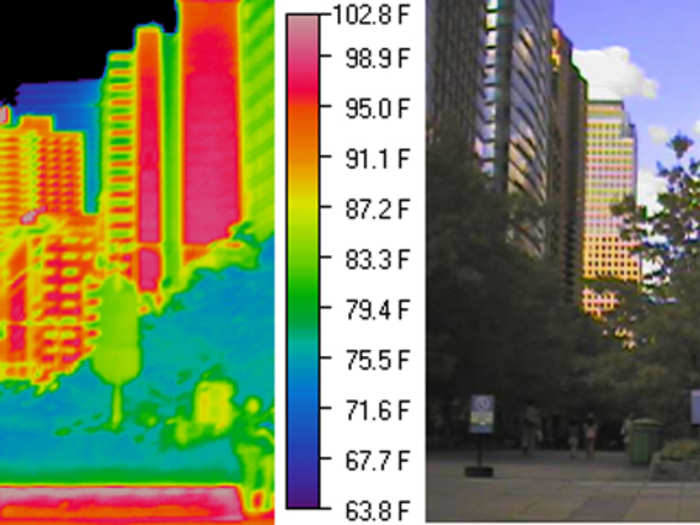
The direct release of heat into the air is called "anthropogenic heat release." The warmest regions on this bus are near the vents (red), which release heat directly from the engine. The area near the engine at the rear of the bus is warmer (green) compared to the street and the passenger area (blue).
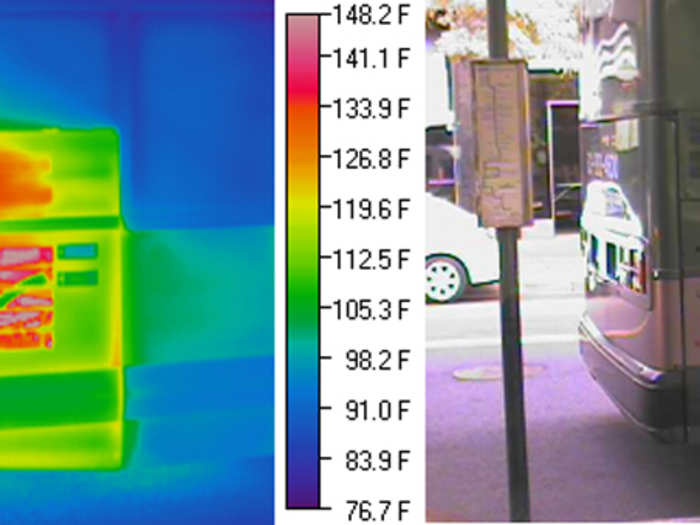
The outer metal surfaces of the two cars are warmer (yellow and red) than the shaded street (green). Notice that the dark-colored car (red) is warmer than the yellow taxi cab. The tires (deep red) are warmer than other parts of car because of friction. The coolest place to be in this picture is the inside of the air-conditioned car.
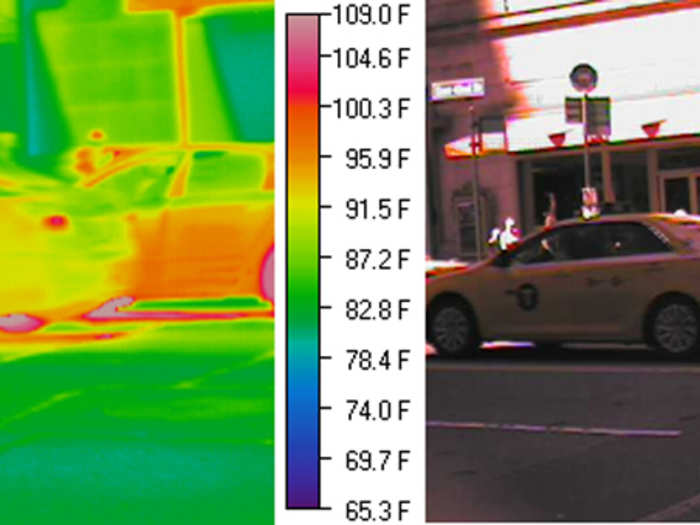
The white strips of the crosswalk reflect sunlight, so they are slightly cooler (yellow orange) than the dark pavement (red). Contact with the air below street level keeps the sewer grate relatively cool (green).

The electric lights and objects in direct sunlight are the warmest objects in this image. In contrast, the sides of the buildings that are not facing the sun and the large shrub in the foreground are relatively cool (blue).
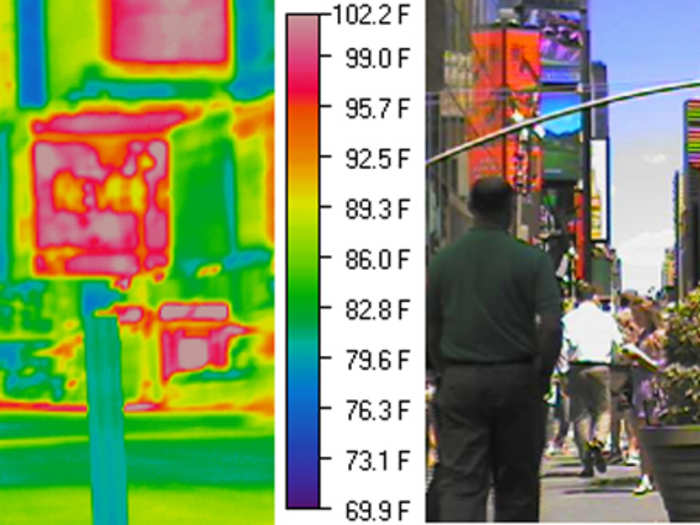
The metallic Empire State sign, a highly reflective surface, remains cool (black), while portions of the building that receive direct sunlight are warm (red).
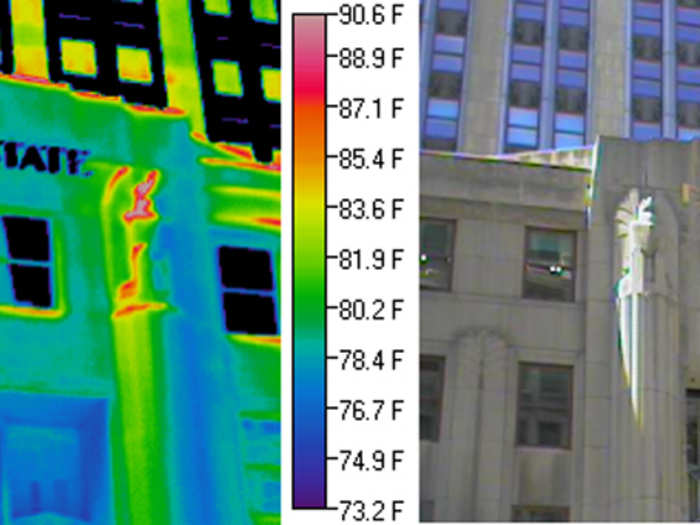
The right-facing wall of the Chrysler building (red) is warmer than the front-facing wall (mostly light green) because it is in direct sunlight. The windows (dark green) suggest that the inside of the building is air-conditioned. The metallic roof reflects sunlight and remains relatively cool — it's nearly invisible in the thermal image.
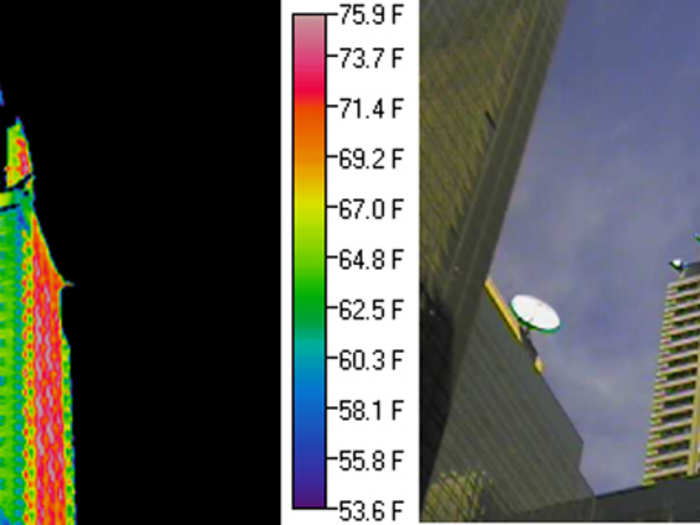
This thermal image is typical of the temperature structure created by skycrapers. The large vertical walls absorb a lot of sunlight and can increase average temperatures in limited areas of a city, while providing shade in other parts. The background sky (black) is the coolest region of the image.
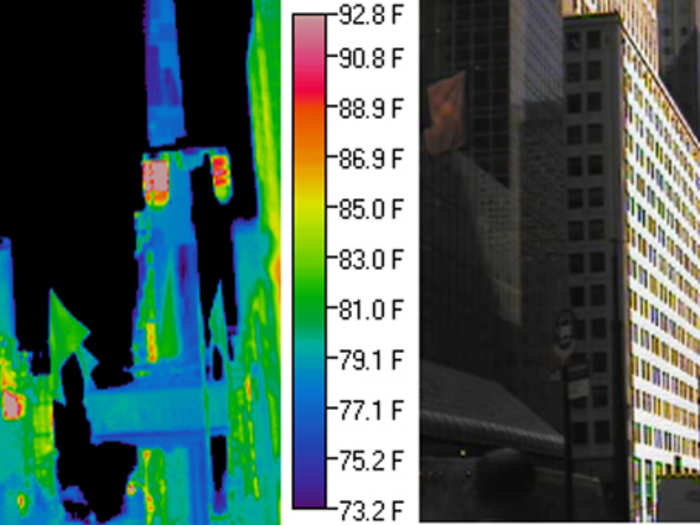
Lights are warmer and therefore emit more longwave thermal radiation than their surroundings, producing the pink or red areas in the above image.
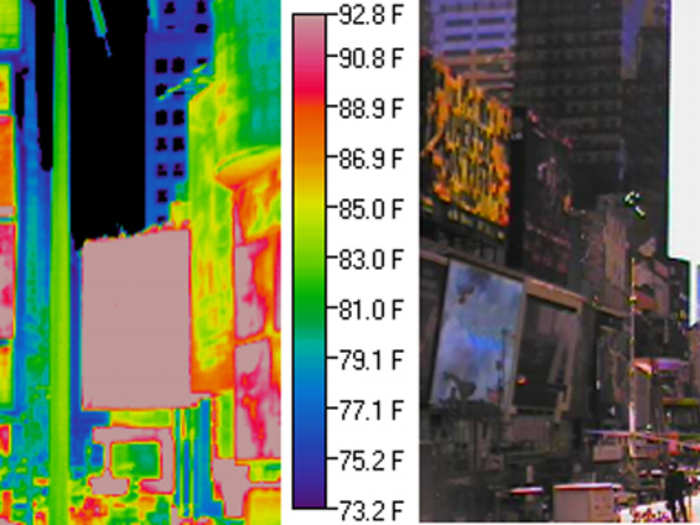
The big, electric screen generates heat and appears red in the thermal image. Since the yellow taxi on the right (pink and red) is in direct sunlight it is warmer than the white van to its left (green).
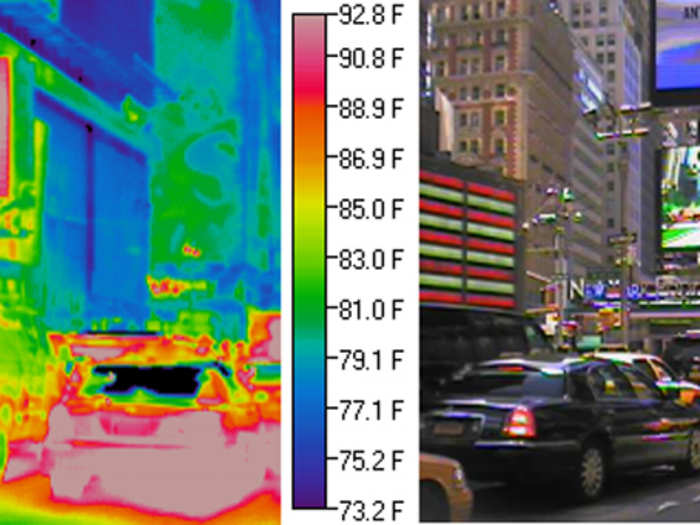
The upper-screen (yellow and red) generates less heat than the lower screen (red).
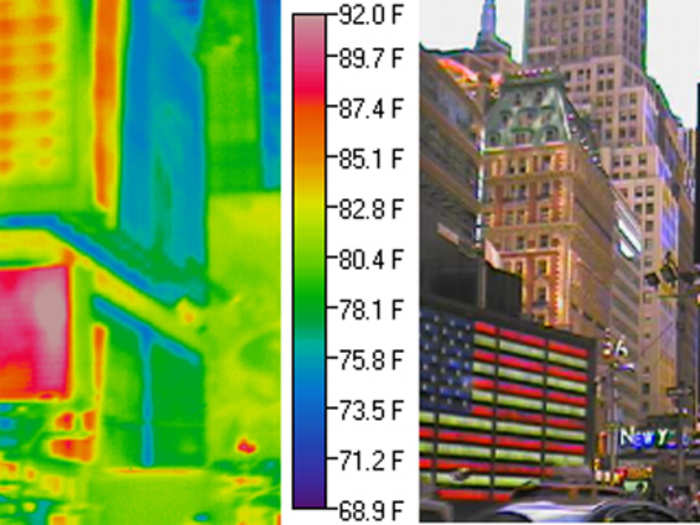
People (red) emit more thermal radiation, through human metabolism, than their relatively cool surroundings (mainly green). Electric screens emit heat and appear red, while shaded areas are blue. The combination of energy use and high population density raises the temperature in a large, concentrated urban area.
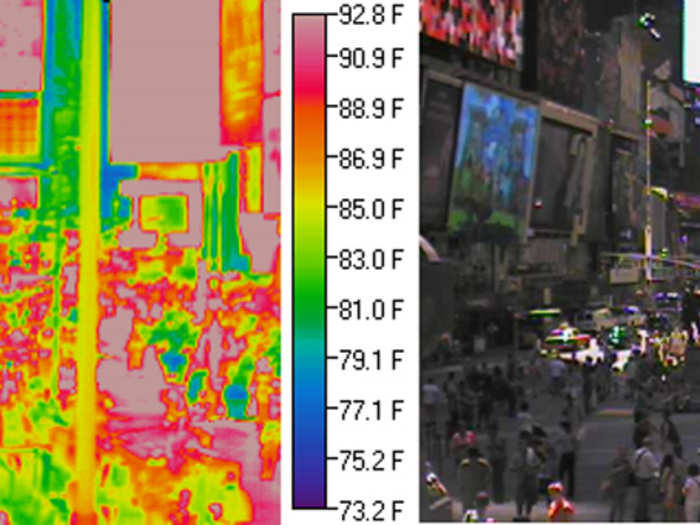
Human metabolism releases approximately the same amount of energy as a 100-watt filament light bulb. As a result, people are "hot spots" (red and yellow) against cooler interior walls (green). Note that the lights hanging from the ceiling also appear as hot spots.

The people in Grand Central Station (green and yellow) emit more heat than their relatively cool surroundings (blue). Note that the windows are almost invisible, meaning it is almost the same temperature inside the station as it is outside.
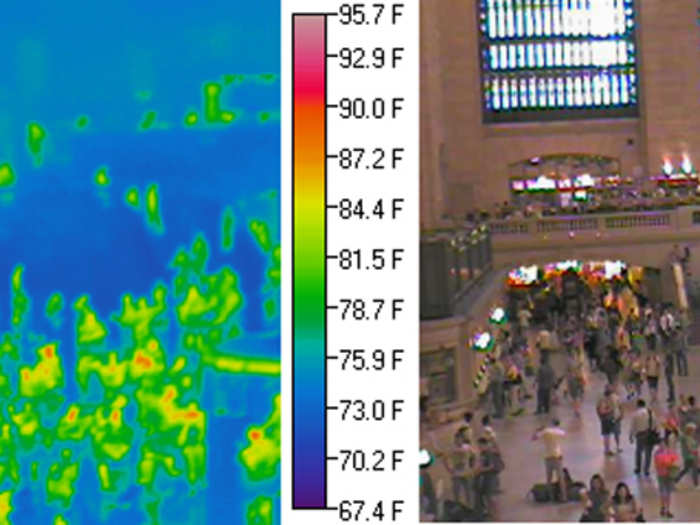
The dark blue windows suggest an air conditioned interior.
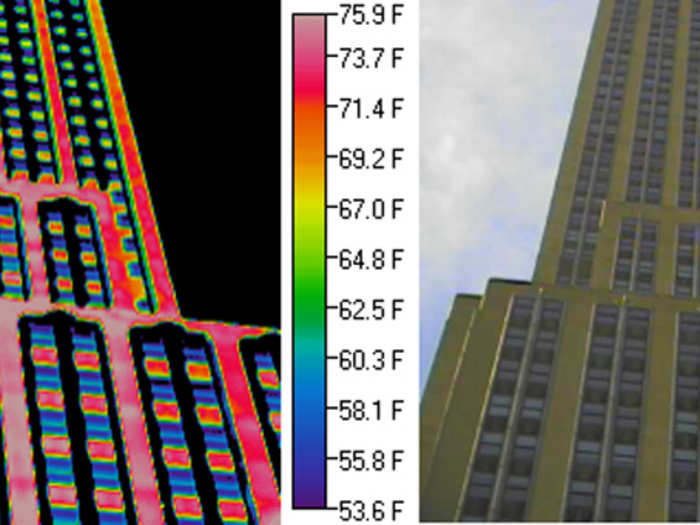
An object's shape effects how much heat certain areas will absorb — a geometrically complex structure that is partially exposed to sunlight will have a similarly complex temperature pattern. Note that the white trim on the top of the building on the right reflects sunlight and therefore remains relatively cool (cool) even on the red wall that faces the sun .
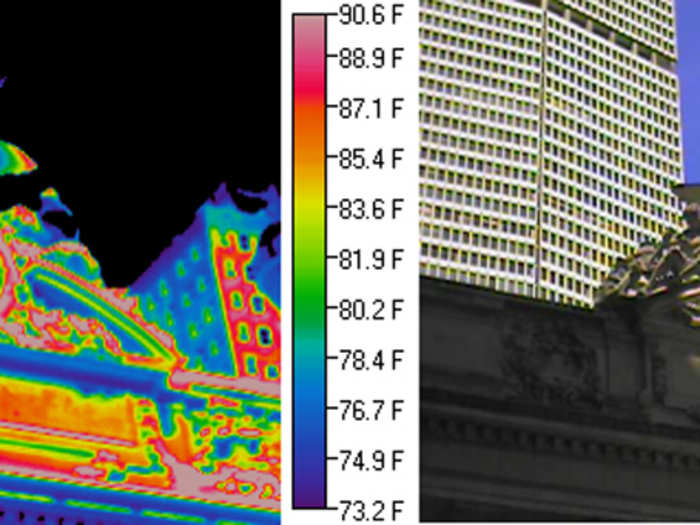
The left-facing walls of buildings (red) are catching the full force of the sun and are warmer than walls that are turned slightly away from the incoming sunlight. Although many of the windows (green) are cooler due to contact with an air-conditioned interior, the energy required to operate air conditioning systems adds heat to the atmosphere, contributing to higher air temperatures in dense urban areas than in rural surroundings.
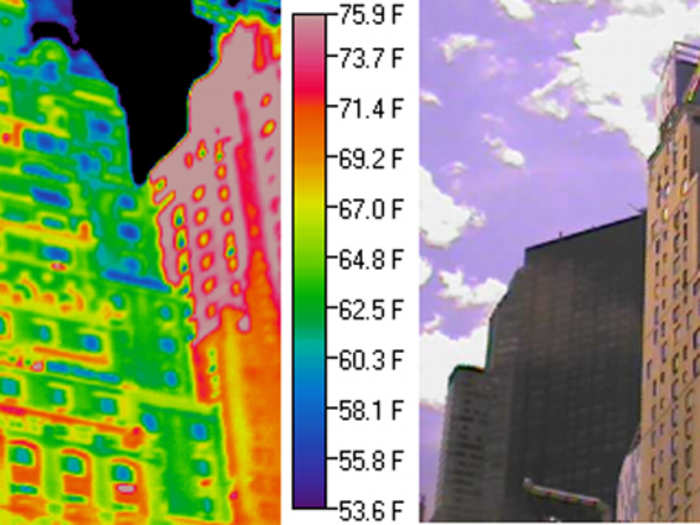
In this thermal image of the Jersey City skyline, the Hudson River is relatively cool (blue) while the buildings are relatively warm (red). The water temperature changes little in response to the daily cycle in heating, while temperatures of building surfaces rise and fall over a day. Clear portions of the sky are very cold (black) while the low-altitude clouds have temperatures similar to the river.
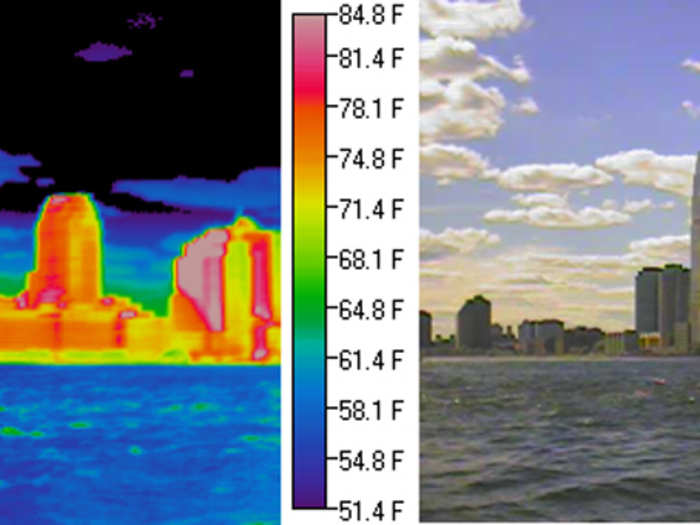
The windows of the air-conditioned building in the center are cooler (dark green) than the solid materials in the surrounding wall (yellow and light green). The tops of the trees in direct sunlight are relatively warm (red).
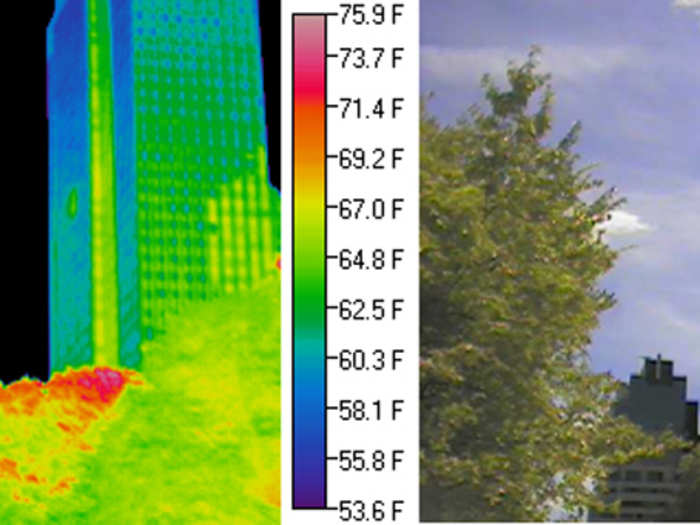
The water remains relatively cool (blue) all day while the Statue of Liberty warms up when exposed to the sun (red). A haze layer exits near the ground, and the particles and droplets in this layer emit “longwave thermal radiation” in the far infrared portion of the spectrum. The haze closest to the ground is relatively warm (red and orange), while the temperature decreases with increasing altitude (yellow to green to blue). The ground is heated both by sunlight and the longwave radiation emitted by the atmosphere. Haze layers over urban areas increase the longwave heating, especially overnight, and promote warmer temperatures.
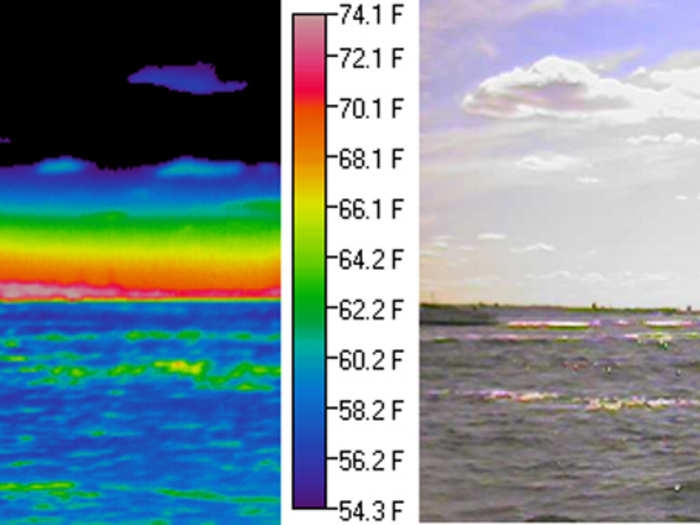
Even the partly-shaded sidewalk is warmer (red and yellow) than the grass (blue and green) to the left.
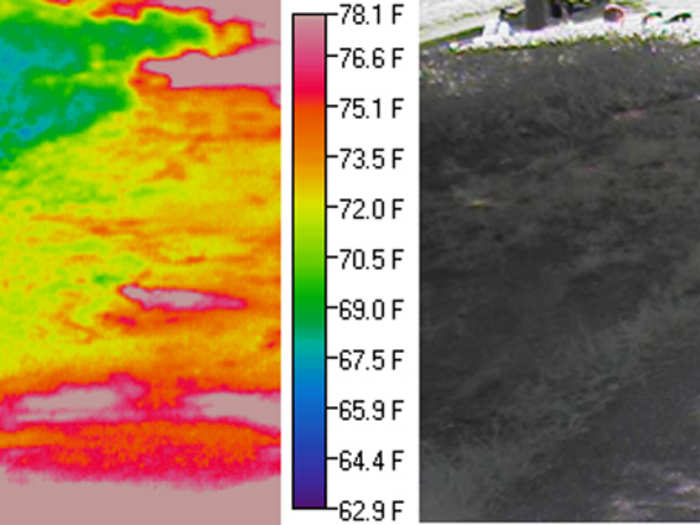
Plants can provide an important counter-balance to the urban island effect. Leaves, which can cool by transpiration, have the coldest temperatures (blue), while the black lamppost that absorbs sunlight efficiently is hot (red).
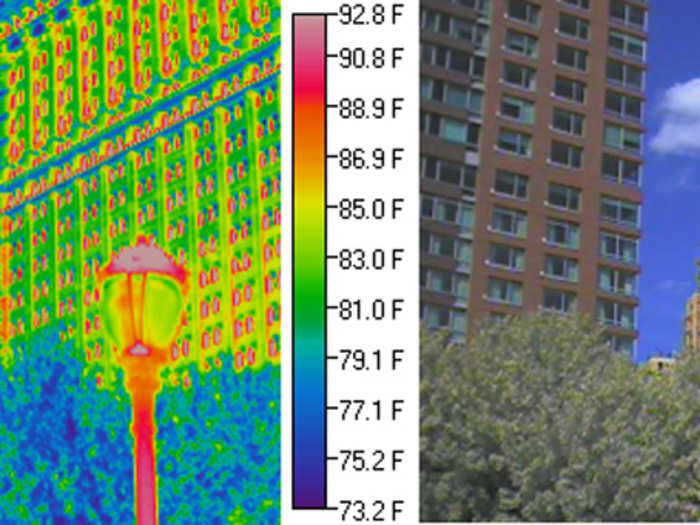
Still don't believe in global warming?
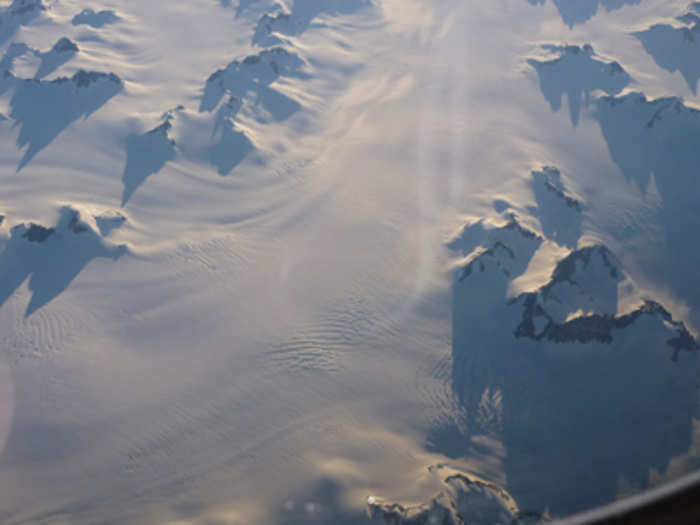
Popular Right Now
Advertisement